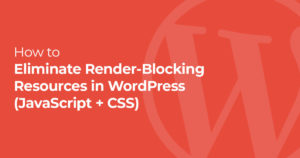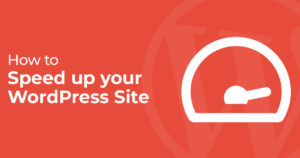Are you tired of slow-loading websites? Looking for a way to speed up your WordPress site and enhance the user experience? Look no further!
In this blog post, we will show you how to lazy load images in WordPress.
By implementing lazy loading, your website will only load images as the user scrolls down, reducing the overall load time and improving website performance. Say goodbye to long loading times and hello to a faster, more efficient website.
Let’s dive in and discover how to easily implement lazy loading for your WordPress images.
What is Lazy Loading?
Lazy loading is a technique used to optimize website performance by loading images only when they are needed. Rather than loading all the images on a webpage at once, lazy loading allows images to be loaded dynamically as the user scrolls down the page. This approach significantly reduces the initial page load time and improves the overall user experience.
Lazy loading works by replacing the actual images with a placeholder or a blank space initially. As the user scrolls, the images within the visible portion of the browser’s viewing area are then loaded. This way, only the necessary images are downloaded, saving bandwidth and reducing the strain on the server.
Benefits of Lazy Loading
Implementing lazy loading on your WordPress website offers several benefits:
- Faster Website Load Time: By loading images on-demand instead of all at once, lazy loading reduces the initial load time for your web pages. This means that users can access and interact with your site faster, leading to improved engagement and satisfaction.
- Improved Website Performance: Loading only the visible images conserves bandwidth and reduces the amount of data that needs to be transferred. This can result in a significant improvement in website performance, especially for image-heavy websites.
- Better SEO Rankings: Search engines like Google consider page load speed as a ranking factor. By implementing lazy loading, you can enhance your website’s performance, potentially leading to higher search engine rankings and increased organic traffic.
- Cost Savings: Lazy loading helps to optimize bandwidth usage. By only delivering images that are actually viewed by users, you can reduce data transfer costs, especially if you are using a CDN (Content Delivery Network) service.
The release of WordPress 5.5 introduced lazy loading as a default feature.
However, if you want more control over how your images lazy load or want to lazy load background images, there are WordPress plugins available to assist you.
In the following sections, we will explore two different methods using popular WordPress plugins to implement lazy loading on your WordPress website: Lazy Load Images in WordPress with WP Rocket and Lazy Load Images in WordPress with a free plugin called “a3 Lazy Load.”
Lazy-loading Images in WordPress 5.5
Lazy-loading images has become an essential technique in optimizing website performance and user experience. With the release of WordPress 5.5 in 2020, lazy-loading images is now a native feature, making it easier than ever to implement on your WordPress website.
In this section, we’ll explore how to utilize lazy-loading in WordPress 5.5 to enhance your website’s speed and efficiency.
Enabling Lazy-loading
By default, WordPress 5.5 automatically adds the loading="lazy" attribute to all img tags that have width and height attributes present. This attribute instructs the browser to only load the image when it becomes visible within the user’s viewport, thereby reducing bandwidth usage and improving page loading times.
To take advantage of lazy-loading in WordPress 5.5, all you need to do is ensure that your images have specified width and height attributes. WordPress will handle the rest, making your website more resource-efficient and providing a smoother user experience. Most themes will do this for you automatically.
Addressing Layout Shifting
Layout shifting, which occurs when images load and cause the content below them to shift, is a common issue that can negatively impact user experience. WordPress 5.5 tackles this problem by back-filling width and height attributes on img tags when they are not already present.
By providing these attributes, the browser can determine the image’s aspect ratio and infer the page layout even before loading the image. This significantly reduces layout shifting, making your website more visually stable and user-friendly.
Optimizing Server-side Performance
To optimize server-side performance, WordPress 5.5 introduces the new wp_filter_content_tags()
Lazy-loading images in WordPress 5.5 offers a simple yet effective way to improve your website’s speed and user experience. By taking advantage of this native feature and optimizing your image attributes, you can reduce bandwidth usage, prevent layout shifting, and enhance the overall performance of your WordPress site. Upgrade to WordPress 5.5 and start leveraging lazy-loading today for a faster and more efficient website.
WordPress Plugins for Lazy Loading
In WordPress, lazy loading can be easily implemented using various plugins. Let’s explore two popular plugins that can help you achieve efficient lazy loading in WordPress.
WP Rocket
WP Rocket is a powerful caching plugin for WordPress that also includes built-in support for lazy loading images. This plugin offers a user-friendly interface and a range of advanced features to enhance your website’s speed and performance.
Features of WP Rocket:
- Lazy Load Images: WP Rocket enables lazy loading for images, ensuring that images are loaded only when they come into the user’s viewport. This significantly reduces the initial page load time and improves overall user experience.
- Mobile Optimization: With WP Rocket, lazy loading is automatically enabled for mobile devices, allowing for optimized loading on smartphones and tablets.
- Compatibility: WP Rocket is compatible with most WordPress themes and plugins, making it a versatile option for lazy loading images without any compatibility issues.
- Customization Options: The plugin provides the flexibility to exclude specific images or classes from being lazy loaded, giving you control over which images are affected by the lazy loading feature.
a3 Lazy Load
a3 Lazy Load is another popular WordPress plugin that simplifies the implementation of lazy loading on your website. Easy to set up and configure, this plugin works seamlessly to improve your website’s loading times.
Key Features of a3 Lazy Load:
- Lazy Load Images and Videos: a3 Lazy Load not only supports lazy loading of images but also extends its functionality to videos, making it a comprehensive solution for optimizing media content.
- Adaptive Images: The plugin includes an adaptive images feature that automatically resizes and compresses images based on the user’s device and viewport, further improving performance.
- Flexible Settings: With a3 Lazy Load, you can customize various settings, such as the threshold for when lazy loading should begin, enabling or disabling specific lazy loading options, and excluding specific images or classes from being affected.
- Compatibility: This plugin is compatible with popular caching plugins and content delivery networks (CDNs), allowing for seamless integration with other optimization tools.
By utilizing plugins like WP Rocket and a3 Lazy Load, you can effortlessly implement lazy loading on your WordPress website, resulting in faster loading times, better user experiences, and improved search engine rankings. So why wait? Install one of these plugins today and start reaping the benefits of lazy loading in WordPress.
Lazy Loading Impact on SEO
Lazy loading can have a significant impact on the SEO (Search Engine Optimization) of your website. By optimizing the load time, lazy loading can enhance your website’s performance and improve user experience. Let’s explore how lazy loading affects different aspects of SEO.
1. Improved Page Speed
One of the key factors that search engines consider when ranking websites is page speed. Slow-loading websites are penalized in search engine rankings, as users tend to prefer faster sites. By implementing lazy loading, you can significantly improve your website’s loading times, leading to better SEO performance. Lazy loading ensures that only the content users are currently viewing is loaded, reducing the initial load time and enhancing overall page speed.
2. Reduced Bounce Rate
A high bounce rate, where users leave your website shortly after visiting, can negatively impact your SEO. Slow-loading images and videos are a common reason for users to abandon a page. By implementing lazy loading, you can prevent this by providing users with loaded content as they scroll. This keeps visitors engaged and reduces the likelihood of them bouncing off your website, ultimately enhancing your overall SEO efforts.
3. Enhanced Mobile Experience
With the increasing use of mobile devices for browsing, optimizing your website for mobile users has become crucial for SEO. Lazy loading plays a vital role in improving the mobile experience. As mobile devices often have slower internet connections, lazy loading ensures that only the necessary content is loaded, reducing data usage and improving loading times. This results in a smoother and more enjoyable mobile browsing experience, positively impacting your SEO rankings.
4. Increased User Engagement
User engagement is another important factor that search engines consider when assessing website quality. By implementing lazy loading, you can provide a seamless and engaging browsing experience for your users. As they scroll through your content, images and videos will load dynamically, allowing them to focus on the content they are actively consuming. This enhanced user engagement can lead to longer visit durations, lower bounce rates, and ultimately improved SEO rankings.
5. Better Core Web Vitals
Core Web Vitals have become a crucial ranking factor in SEO. These metrics measure various aspects of user experience, including loading times, interactivity, and visual stability. By implementing lazy loading and optimizing your website’s performance, you can improve these key metrics, resulting in better Core Web Vitals. This, in turn, can have a positive impact on your search engine rankings and overall SEO performance.
In conclusion, lazy loading is not only beneficial for improving website performance and user experience, but it also has a positive impact on SEO. By optimizing page speed, reducing bounce rates, enhancing the mobile experience, increasing user engagement, and improving Core Web Vitals, lazy loading can contribute to higher search engine rankings and ultimately drive more organic traffic to your website.
Conclusion
Implementing lazy load for images in WordPress can significantly improve the performance and speed of your website. By only loading images when they are visible on the user’s screen, you can reduce the initial page load time and conserve bandwidth. This not only enhances the user experience but also boosts your website’s ranking on search engines like Google.
If you’re excited to dive deeper into making your website lightning-fast, especially when it comes to loading images, check out this guide to making images load fast on your website. It’s packed with easy-to-follow tips and tricks to help your images load faster.
Remember, optimizing your website for speed is crucial in today’s web. By implementing lazy load for images, you can provide a seamless and enjoyable browsing experience for your users while also improving your website’s visibility and ranking.



3 Responses
Thanks for the amazing info that you provided in this article. Loved it. I hope you will post more meaningful articles in the near future. https://sites.google.com/view/treasurehunt7808e/home
You are amazing. Keep up the good work. Because it influences a lot of people in a good way.
Great Resource! I am personally using WP Rocket and WPX CDN and it’s working the best for me site.
HII, I’m JASEELA
FREELANCE DIGITAL MARKETING STRATEGIST IN MALAPPURAM
AS A FREELANCE DIGITAL MARKETING STRATEGIST IN MALAPPURAM EMPOWERING BUSINESSES WITH STRATEGIC DIGITAL SOLUTIONS | YOUR GROWTH, OUR EXPERTISE
Let’s Connect : https://jazeelaap.com/